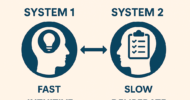Many drug ads in the Journal of the American Medical Association (JAMA) during the 1950s, 1960s, and 1970s would offend today.
In an ad for Valium, we are told that the woman pictured (“Jan”) is “psychoneurotic” because she is unmarried at age 35. “You probably see many such Jans in your practice,” says the ad—“The unmarrieds with low self-esteem. Jan never found a man to measure up to her father.”
Valium was also added to hormones to treat menopause. “Sally Wilson has lost her reputation,” says a headline over a woman in reading glasses with a ream of papers, who appears to be an office worker. “In the last week or so, Sally Wilson’s year-old reputation as an unpredictable grouch has melted away.” Why? “Sally’s menopause had triggered symptoms that hormone therapy by itself apparently hadn’t helped,” but adjunctive Valium has “helped her relax.” Now Sally has “been coming in on time and turning out more work,” says the ad.
(In 1946, an ad from Smith, Kline & French in Psychosomatic Medicine actually calls electric shock one of “fundamental measures” for menopause. Yes, electric shock.)
Contempt for patients was not hidden in many early ads. An ad for the sleeping pill Quaalude reads, “Now the physician has one less tired, sleepy and apprehensive patient to contend with.” Contend? Another recommends psychoactive drugs, “If She Calls You Morning … Noon … and Night Day After Day.”
Situational malaises were also treated with medication. “I’m restless, nervous, tired all the time and always nagging,” says an ad for the antidepressant Sinequan on a backdrop of dirty dishes needing washing. Another Sinequan ad shows a woman hanging clothes on a clothesline with the headline, “A lot of little things are wrong. Headaches, diarrhea, this rash on my arm. And sometimes I think I don’t like being married.” Another Jan who can’t find a husband to measure up to dear old Dad?
“Why is this woman tired?” asks another ad. She may be like “many of your patients—particularly housewives—[who] are crushed under a load of dull, routine duties that leave them in a state of mental and emotional fatigue. For these patients, you may find ‘Dexedrine’ an ideal prescription.”
Some drug ads in old medical journals are shockingly misogynistic. “A sleeping pill for night squawks” was the headline for an ad for the hypnotic sedative Doriden in a 1969 issue of JAMA. “She has insomnia . . . so he’s awake,” says the copy, empathizing with the man, not the woman. “Restless and irritable, she growls at her husband. How can this shrew be tamed?” Yes: The ad calls the woman a shrew.
An ad for the psychoactive drug Triavil adds ageism onto the sexism. Showing an older, wrinkly woman in a bouffant wig with hair bows, gigantic sunglasses, and garish jewelry, the headline—“Lady, your anxiety is showing (over a coexisting depression)”— is disrespectfully written right across her nose.
“On the visible level, this middle-aged patient dresses to look too young, exhibits a tense, continuous smile and may have bitten nails or overplucked eyebrows,” says the ad copy. “What doesn’t show as clearly is the coexisting depression.”
Children were also overly medicated. As early as 1956, ads for the antipsychotic Thorazine said it “reduces hyperactivity and aggressiveness, decreases anxiety and hostility [and] improves mood, behavior and sleeping patterns . . . in belligerent, overactive children.” It was also advertised for childhood vomiting.
The tranquilizer Miltown was similarly advertised for “a wide range of tension/anxiety-related disorders of children and adolescents, ranging from tics and tantrums to ‘school headache’ and stammering.”
Thorazine was also advertised for treatment of alcoholism, asthma, bursitis, arthritis, cancer, the fear of cancer, ulcers, psoriasis, senility, menopause, and hiccups in adults. Yes: hiccups.
While many direct-to-consumer (DTC) ads today “sell” diseases and escalate minor conditions to make a patient “ask you doctor,” ads before DTC ads were often not better.
Martha Rosenberg is a health reporter and the author of Born With a Junk Food Deficiency.
Image credit: Shutterstock.com































![Antimicrobial resistance: a public health crisis that needs your voice [PODCAST]](https://kevinmd.com/wp-content/uploads/Design-1-190x100.jpg)

![Rethinking medical education for a technology-driven era in health care [PODCAST]](https://kevinmd.com/wp-content/uploads/The-Podcast-by-KevinMD-WideScreen-3000-px-4-190x100.jpg)
